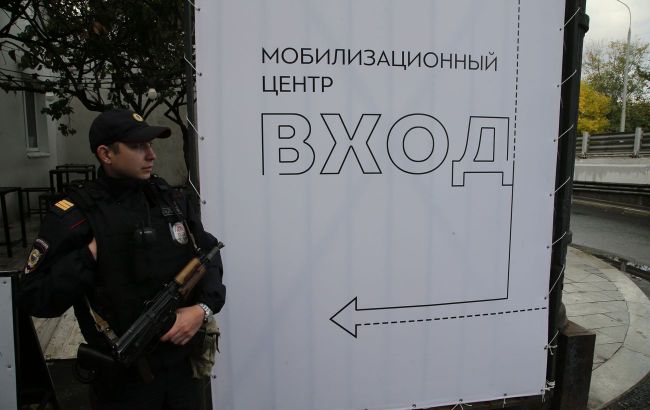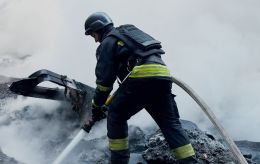Draft boards in fire all around Russia: Both teenagers and the elderly have their hands in arson attacks
 Illustrative photo (Photo: Getty Images)
Illustrative photo (Photo: Getty Images)
From July 29 to August 2, there were 30 draft board buildings set on fire in Russia. Such a massive simultaneous number of arson incidents has never been seen before, according to the Russian publication "Mediazona."
The publication notes that the absolute majority of attacks in the last five days are linked to the actions of telephone scammers who, under various pretexts, persuade people to commit arson.
Who is responsible for setting draft boards on fire in Russia?
Mostly, draft boards in Russia have been set on fire by pensioners and elderly individuals. For example, an 82-year-old pensioner came to the building of the draft board in the Krasnoarmeysky district of Volgograd with Molotov cocktails and mobile phones.
In addition, an 80-year-old man attempted to set fire to a draft board in Podolsk.
Young people have also been involved in setting draft boards on fire in Russia. For instance, a 17-year-old girl started a fire in a settlement in the Trans-Baikal region. An 18-year-old saleswoman of a children's toy store set fire to the doors of a draft board in Ishimbae (Bashkiria), while a 19-year-old student did the same in Kazan.
Furthermore, a 24-year-old manager of a "Vkusno i Tochka" establishment attempted to set fire to a draft board in Podolsk. In Rossoh, a 24-year-old teacher threw a Molotov cocktail at the door of a commissariat.
What were the reasons for people to set fire to draft boards?
According to the publication, the main reasons behind the arson attacks on draft boards in Russia were the actions of telephone scammers. The scammers used various pretexts to convince people that their bank accounts were being targeted for theft. They then demanded that the victims set fire to the draft boards claiming that the money thieves were hiding in those buildings.
Some of the scammers were successful in coercing individuals to take out loans, like the case of a 62-year-old pensioner in Kazan who took out a million-dollar loan and sent the money to the scammers.
The scammers also told some of the perpetrators that the draft boards personnel were working for Ukraine, and therefore, they needed to obstruct and set fire to the buildings.
What are the results of the arson attacks, and how does the law enforcement react to them?
The results of the arson attacks on draft boards in Russia have been mixed. In most cases, the attacks did not cause significant damage inside the buildings; typically, only doors or windows were burned. Some of the arson attempts were unsuccessful, and a few perpetrators were arrested before they could carry out the attacks.
Law enforcement authorities in Russia have predominantly charged the perpetrators with criminal offenses not directly related to "political" articles. The charges typically include intentional destruction of property and hooliganism. Only in one case was the arson classified as an act of terrorism.
Draft boards in Russia began to be set on fire after the invasion of Ukraine by the occupiers
It is worth noting that the increase in arson incidents at draft boards occurred after the invasion of Ukraine and particularly after the announcement of so-called "partial mobilization" by Russian dictator Vladimir Putin.

